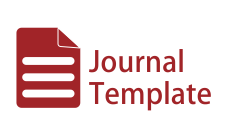House ownership financing: sharia economic perspective
DOI:
https://doi.org/10.21580/jiemb.2021.3.2.11797Keywords:
house ownership financing, sharia economic, murābaḥah, ijārah muntahiya bi tamlīk, istiṣnā‘, mushārakah mutanāqiṣah.Abstract
A place to live is one of the basic needs, so everyone tries to have it. However, people often have difficulty buying them in cash due to increasingly expensive house prices and limited funds. From here, banking institutions offer a house ownership model through a credit system. This article aims to determine the position of house ownership financing/credit from an Islamic economic perspective and what contracts can be made in this financing. This study uses a normative juridical method. Research data is obtained through library data in books, journals, laws and regulations, and other scientific writings related to mortgages from an Islamic economic perspective. Data analysis used qualitative data analysis methods, which were then presented descriptively. The study results that based on sharia economics, reinforced by the fatwa of the National Sharia Board-Indonesian Council of Ulama, financing home ownership in Islamic economics is justified as long as it complies with sharia provisions. Some of the contracts that can be made in financing the ownership of the house include murābaḥah, ijārah muntahiya bi tamlīk, istiṣnā‘, and mushārakah mutanāqiṣah contracts.
Downloads
References
Al-Zuhailī, W. (2011). al-Fiqh al-Islāmī wa Adillatuhu. Jakarta: Gema Insani Press.
Alma, B., & Priansa, D. J. (2009). Manajemen Bisnis Syariah. Bandung: Alfabeta.
Amin, H., Rahman, A. R. A., Razak, D. A., & Rizal, H. (2017). Consumer attitude and preference in the Islamic mortgage sector: a study of Malaysian consumers. Management Research Review, 40(1), 95–115. https://doi.org/10.1108/MRR-07-2015-0159/FULL/XML
Amiruddin, & Asikin, Z. (2012). Pengantar Metode Penelitian Hukum. Jakarta: Raja Grafindo Persada.
Antonio, M. S. (2001). Bank Syariah: Dari Teori ke Praktik. Jakarta: Gema Insani Press.
Asiyah, B. N. (2015). Manajemen Pembiayaan Bank Syariah. Yogyakarta: Kalimedia.
Dewan Syariah Nasional. (2000a). Fatwa Dewan Syariah Nasional No: 04/DSN-MUI/IV/2000 Tentang Murabahah. Jakarta. Retrieved from https://dsnmui.or.id/kategori/fatwa/page/15/
Dewan Syariah Nasional. (2000b). Fatwa Dewan Syariah Nasional No: 06/DSN-MUI/IV/2000 Tentang Jual Beli Istishna’. Jakarta. Retrieved from https://dsnmui.or.id/kategori/fatwa/page/15/
Dewan Syariah Nasional. (2008). Fatwa Dewan Syariah Nasional No: 73/DSN-MUI/XI/2008 Tentang Musyarakah Mutanaqisah. Jakarta. Retrieved from https://dsnmui.or.id/kategori/fatwa/page/8/
Fatmasari, N. (2013). Analisis Sistem Pembiayaan KPR Bank Konvensional dan Pembiayaan KPRS Bank Syariah (Studi Kasus Bank BTN dengan Bank Muamalat). Jurnal Akuntansi AKUNESA, 1(3). Retrieved from https://jurnalmahasiswa.unesa.ac.id/index.php/jurnal-akuntansi/article/view/2282
Firmansyah, E. A., & Indika, D. R. (2017). Kredit Pemilikan Rumah Syariah Tanpa Bank: Studi di Jawa Barat. Journal of Theoretical and Applied Management (Jurnal Manajemen Teori Dan Terapan), 10(3), 223–230. https://doi.org/10.20473/JMTT.V10I3.6541
Hamid, A., & Masood, O. (2011). Selection criteria for Islamic home financing: a case study of Pakistan. Qualitative Research in Financial Markets, 3(2), 117–130. https://doi.org/10.1108/17554171111155357/FULL/XML
Hardjono, S. (2008). Mudah Memiliki Rumah Idaman Lewat KPR. Yogyakarta: Pustaka Grhatama.
Haris, H. (2007). Pembiayaan Kepemilikan Rumah (Sebuah Inovasi Pembiayaan Perbankan Syari’ah). La_Riba: Jurnal Ekonomi Islam, 1(1), 113–125. https://doi.org/10.20885/LARIBA.VOL1.ISS1.ART8
Heykal, M. (2014). Analisis Tingkat Pemahaman KPR Syariah pada Bank Syariah di Indonesia: Studi Pendahuluan. Binus Business Review, 5(2), 519–526. https://doi.org/10.21512/BBR.V5I2.1010
Kara, M. (2013). Konstribusi Pembiayaan Perbankan Syariah terhadap Pengembangan Usaha Mikro, Kecil, dan Menengah. Ahkam: Jurnal Ilmu Syariah, 13(2), 315–322. https://doi.org/10.15408/AJIS.V13I2.944
Kurniawan, A., & Inayah, N. (2013). Tinjauan Kepemilikan dalam KPR Syariah: Antara Murabahah, Ijarah Muntahiyyah Bittamlik, dan Musyarakah Mutanaqisah. Equilibrium: Jurnal Ekonomi Syariah, 1(2), 279–301. https://doi.org/10.21043/equilibrium.v1i2.210
Lesmana, M., Suminto, A., & Rosmitha, S. N. (2021). Pembiayaan Property Indent (KPR Syariah) Ditinjau dari Maqashid Syariah dan Qawaidul Fiqhiyyah. Journal of Islamic Economics and Philanthropy, 4(3), 1260–1279. https://doi.org/10.21111/JIEP.V4I03.6576
Meera, A. K. M., & Razak, D. A. (2005). Islamic home financing through Musharakah Mutanaqisah and al-Bay’ Bithaman Ajil contracts: a comparative analysis. Review of Islamic Economics, 9(2), 1–27. Retrieved from http://irep.iium.edu.my/9713/
Pengusahamuslim. (n.d.). Keputusan Majma’ al-Fiqh Al-Islami tentang KPR dan Peran Pemerintah. Retrieved July 15, 2021, from https://pengusahamuslim.com/3397-kpr-dan-peran-1811.html
Ristanto, S., & Prastiowati, I. (2016). Jangan Salah Memilih KPR: Buku Pinter Meminjam KPR di Bank. Yogyakarta: Asdamedia.
Sapi’i, & Setiawan, A. (2016). Pemilihan Pembiayaan KPR (Kredit Pemilikan Rumah) dengan Akad Murabahah (Studi Kasus di Bank Muamalat Tbk Cabang Pembantu Samarinda Seberang). Al-Tijary: Jurnal Ekonomi Dan Bisnis Islam, 2(1), 17–24. https://doi.org/10.21093/AT.V2I1.688
Satria, M. R., & Setiani, T. (2018). Analisis Perbandingan Pemberian Kredit Pemilikan Rumah (KPR) pada Bank Konvensional dengan Pembiayaan Murabahah (KPR) pada Bank Syariah (Studi Kasus Pada Bank BJB dengan Bank BJB Syariah). Amwaluna: Jurnal Ekonomi Dan Keuangan Syariah, 2(1), 107–117. https://doi.org/10.29313/AMWALUNA.V2I1.2880
Subekti, R. (1995). Aneka Perjanjian (10th ed.). Bandung: Citra Aditya Bakti.
Yusof, R. M., Bahlous, M., & Haniffa, R. (2016). Rental rate as an alternative pricing for Islamic home financing: An empirical investigation on the UK Market. International Journal of Housing Markets and Analysis, 9(4), 601–626. https://doi.org/10.1108/IJHMA-10-2015-0063/FULL/XML
Downloads
Published
Issue
Section
License
Authors who publish with this journal agree to the following terms:
Authors retain copyright and grant the journal right of first publication with the work simultaneously licensed under a Creative Commons Attribution-ShareAlike 4.0 International License that allows others to share the work with an acknowledgement of the work's authorship and initial publication in this journal.
Authors are able to enter into separate, additional contractual arrangements for the non-exclusive distribution of the journal's published version of the work (e.g., post it to an institutional repository or publish it in a book), with an acknowledgement of its initial publication in this journal.
Authors are permitted and encouraged to post their work online (e.g., in institutional repositories or on their website) prior to and during the submission process, as it can lead to productive exchanges, as well as earlier and greater citation of published work (See The Effect of Open Access).



